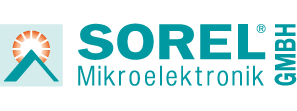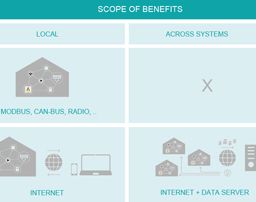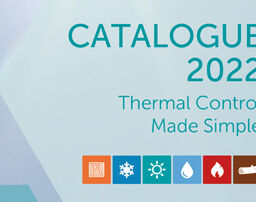Hardwired or Wireless?
Reading time: 7 min

In the age of connectivity, we are surrounded by more and more networked devices which communicate with each other wirelessly: TVs stream via WLAN, giro cards are used for contactless payment via NFC, mobile phone batteries are charged by induction and thermostats are controlled remotely via smartphone.
One might think that the future is wireless. But as is often the case, the optimal solution depends on the application, as hardwired and wireless connections have their own advantages.
In addition, a distinction must be made between two perspectives: communication between connected devices and their power supply. Both can be wired or wireless. A WiFi router would certainly be described by many as a wireless device, as its primary function is precisely to manage a wireless network, but it does have a corded power supply.

Fig.: “Wireless” can refer to power supply or communication. The table shows possible combinations using the example of a heat source with a room thermostat.
Cables score points with operational reliability
A wireless connection reduces the installation effort, does not make a mess and is invisible in the house. These are the most important and legitimate reasons for the increasing spread of communication via radio and WLAN. Wireless connections are therefore particularly popular in existing buildings, where wiring is labour-intensive and costly.
However, wired devices and networks offer immense advantages, especially in terms of operational reliability – an important aspect for heating technology as part of the basic building infrastructure. In this context, wired solutions can mitigate some of the major challenges of designing connected HVAC products.
So why is cabling considered more robust?
- Wired data connections are less vulnerable to physical disruption and interference. Walls, concrete ceilings and metal surfaces such as pipes or manifolds do not present any obstacles to cable connections during operation. Wireless data communication, on the other hand, can be massively impaired in its transmission power.
- Wireless communication can be disturbed by external systems on the same frequency. These are particularly difficult to control, as they can, for example, be broadcast by the neighbour’s router. Interference therefore often goes unnoticed and can change constantly as devices or inventory change position. They are therefore beyond the control of the installer, who is nevertheless put in charge to detect the cause of the malfunction.
- Wired data communication is better suited for longer ranges. Especially in commercial buildings such as offices or hotels, long distances often have to be covered. Although there are specialised radio technologies for long transmission distances, these features come at the expense of the other important features. LoRa, for example, is a radio standard that even allows a range of several kilometres, but is only suitable for the smallest data volumes and requires a separate server.
- They generally offer higher transfer rates and lower latency. Here too, there are specialised radio standards such as WLAN, which can keep up with wired technologies, but other disadvantages such as power consumption or range are all the more important.
- They usually do not need a separate gateway. A gateway for managing a wireless network costs money, has to be installed additionally and increases the technical complexity in case of an error.
- They have a permanent and more stable power supply, which reduces the risk of failure (compare e.g. empty batteries)
Info box: Radio signals in the building

Fig: Rule of thumb for the transmission of WLAN signals through different materials
Water puts a particularly strong barrier on WLAN signals, as their radio frequency coincides with the resonance frequency of water. The guide values shown here are only a simplified rule of thumb. In reality, many other local and developmental factors affect the signal strength of radio transmissions, such as
- Material strength
- possible coatings and chemical additives
- Radiation angle
- Moisture in the wall
- Selection of radio technology
- Electronic components and layout
Data rates in heating technology
HVAC applications are generally well suited to the use of wireless technologies given that they typically do not require high-frequency data transmission.
In slow systems such as underfloor heating or for determining the energy consumption of a heat source, a 15 to 30-minute transmission interval or demand-based wake-up calls are easily sufficient. The situation is different with fresh water systems, functions such as window open detection or the control of radiators, which sometimes require very fast reaction times.
Short transmission intervals can also be useful to keep the risk of confusion for the user low. Users may be misled into taking wrong actions if a conscious user action such as changing a parameter, opening a window or the like does not immediately cause the expected reaction because the system synchronises itself too seldom. Or when two displays convey contradictory information due to data inertia – e.g. app and physical device, or two room thermostats in the same system. User confusion, in turn, is often the starting point for a chain reaction of misguided follow-up actions, resulting in a dysfunctional system or unnecessary support efforts.
Hidden costs in after sales support
A bottleneck in the heating industry is the shortage of qualified installers. Since some plumbers are rather reluctant to work on the electrics, reducing the amount of wiring seems particularly attractive.
However, something that is often overlooked: what is simplified in terms of wiring is merely shifted to the set-up of the wireless connection. The installation is therefore not necessarily made easier, but rather “different”. However, since many HVAC tradesmen today are just as reluctant to work as network technicians or IT specialists, the increased use of wireless communication is not really in their favour either.
On the contrary, problems in wireless connections are even less tangible and thus more difficult to solve than incorrect electrical connections or cable breaks.
The decision to use wireless communication may be the right one, but it is advisable to take into account not only the visible costs, but also those hidden costs in product decisions.

Fig.: Cost comparison of cable-based versus wireless HVAC components
The pitfalls of wireless power supply
Battery-powered, connected HVAC products are mainly used in renovation projects to bridge distances in a minimally invasive way or to reduce the amount of wiring required.
For product development, this implies the additional challenge of having to optimise the system for long battery lifetimes – a complicated undertaking that usually has to be bought at the expense of other product properties. However, where battery life is not an issue, there is no need for compromise in many technical design decisions.
Either way, batteries must be replaced regularly. Whatever effort and costs are saved during installation must ultimately be borne by the system operator himself over the years – with the difference that the installer can no longer charge for his work.
If the installer’s order books are saturated anyway and the homeowner does not value the convenience of a low-maintenance system, this consideration is not necessarily significant. Especially in the public and commercial sector, however, the use of batteries increases maintenance costs and can therefore become a no-go.
As batteries also contain harmful substances such as mercury, cadmium or lead and have a poor energy balance, the higher environmental impact is another aspect to avoid their excessive use as much as possible.
As an alternative to batteries, there are energy self-sufficient devices, such as some thermostatic radiator valves (TRVs), which are self-powered by means of energy harvesting. This involves generating small amounts of electrical energy from the ambient temperature or air currents to supply wireless devices with low power consumption.
As appealing as the principle of this technology may seem, it raises the requirements for optimising internal consumption even higher than the battery, and also requires sufficient ambient energy from which it can be fed. Added to this are the high unit costs, which have so far stood in the way of widespread use of energy harvesting.
Meeting the variety of installation situations with flexibility
Manufacturers generally want to make their products suitable for a wide range of installation situations and must therefore plan for the tougher cases as well.
Once the decision has been made to use wireless communication, the selection of the right radio technology, electronics and product layout should therefore be made with extreme care. In any case, the development effort for radio-based products is usually higher than for wired ones.
Even though there are some arguments in favour of using batteries, there are many arguments in favour of a wired power supply due to the risk of failure, ongoing expenditure and environmental aspects.
Intelligent product design can also further reduce the requirements for a wired installation. If, for example, room thermostats and sensors can be inserted into existing switch boxes for light and sockets in a minimally invasive way, the wired power supply combines the best of both worlds, even in existing buildings, without having to make large wall slits.
With regard to the communication between the control components, a cable connection has many technical advantages. Wireless communication via radio or WLAN is, however, an excellent alternative when cabling is not feasible – for example, in refurbishment projects.
As both ways have their right to exist, solutions should be available for both in order to be flexible for every installation situation. It may even be possible to design wireless and wired product variants in such a way that they can be combined with each other to simplify warehousing and dispatching.








